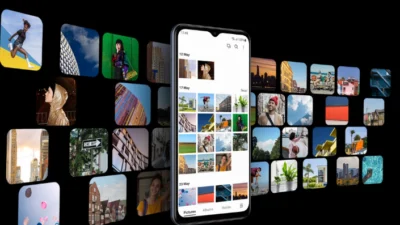PASUNDAN EKSPRES – In a recent announcement, Samsung has introduced its latest camera sensor, the Isocell GNK, for mid-range to flagship smartphones.
This remarkable camera sensor boasts a stunning 50-megapixel resolution, following in the footsteps of its predecessor, the Isocell GN1, which was introduced back in May 2020.
The GN1 found its way into various Samsung phones and other prominent brands, including the Google Pixel 6 Pro and 7 Pro, Vivo X Note, and the Galaxy Note 20.
Baca Juga:Hyundai and Kia Surpass 100,000 Electric Vehicle Sales Milestone in the United StatesAwal Mula Perselingkuhan Koh Apex dan Dinar Candy Diungkap Istri Sah
Despite its identical physical dimensions to the GN1, the Isocell GNK retains a sensor size of 1/1.3 inches with pixel dimensions of 1.2 microns.
However, as the successor, the GNK sensor offers significant improvements, including swift autofocus capabilities, a wider dynamic range, and the ability to record high-resolution 8K videos.
In the realm of focusing, the Isocell GNK’s 50MP camera sensor already supports Dual Pixel Pro autofocus technology.
This innovation allows the sensor to capture quick and sharp focus, even when capturing moving subjects.
Notably, the Isocell GNK excels in video recording, supporting high-resolution 8K video at a frame rate of 30 frames per second (fps).
Samsung claims that this sensor can capture 8K video at 30 fps with minimal loss of field of view. Additionally, the Isocell GNK supports HDR and FHD video recording at a frame rate of 240 fps.
This 50MP camera sensor is also capable of capturing images with a dynamic range of up to 120 dB. In Pro mode, the GNK sensor can capture images with a color depth of up to 14 bits (RAW 14-bit).
Baca Juga:Ayu Soraya Istri Koh Apex yang Nikah Siri dengan Dinar Candy: Diancam DimiskinkanCara Daftarkan KTP untuk Beli Gas 3 Kg, Berlaku Mulai 1 Januari 2024
To achieve this wide dynamic range, the GNK operates in three different ISO modes, which also help reduce motion artifacts that may disrupt the quality of photos.
Furthermore, Samsung introduces the Tetrapixel technology, enhancing image capture in low-light conditions. Tetrapixel technology combines four sensors into a larger size of 2.4 microns, allowing for more light to be captured.
